The first really huge country with so many different cuisines that it’s nigh on impossible to find common ground between them. China. I’m not going to go into the whole geographical part of this – though maybe a couple of notes. It is, perhaps surprisingly, smaller than the United States, not by much, but it’s only 98% of the total land area.  On the other hand, it’s got four times the population. Nationally, there are 56 different recognized ethnic groups, though one of those, Han Chinese, make up 90% of the population, at least officially. But even that large group has its differences, given that there are 292 actively spoken languages in the country, and while a few of those are things like English and Spanish, or neighboring countries’ languages, the vast majority are languages native to China.
On the other hand, it’s got four times the population. Nationally, there are 56 different recognized ethnic groups, though one of those, Han Chinese, make up 90% of the population, at least officially. But even that large group has its differences, given that there are 292 actively spoken languages in the country, and while a few of those are things like English and Spanish, or neighboring countries’ languages, the vast majority are languages native to China.
When it comes to food, there’s a general categorization of Chinese cuisines into four major groups, basically fitting geographically into north, east, south, and west China. But, there are really eight official regional cuisines of the country, and there’s no unifying theme or ingredient to them.
So, what was I to do in trying to come up with something representative? Starting with the soup, my first thoughts leaned towards something somewhat ubiquitous, like an egg-drop soup, some version of which can probably be found in most any part of the country. But I make egg-drop soup all the time as a quick comfort snack soup, and there’s not much in the way of a challenge. Or perhaps some sort of noodle or dumpling soup, as those are pretty widespread, though the type of broth, noodle and/or dumpling, vary widely. In the end, I decided to go with a soup that I enjoy a lot, would actually take some work to make, and which has the distinction of being claimed by two disparate regions as its origin point – Szechuan and Beijing. Suanla Tang, or, Hot and Soup Soup it is.
So what’s the closest thing China has to empanadas? So many options. There are even garlic-chive filled fried empanada-like pastries, and had I remembered about those, I’d have probably made them. But I decided on some form of bao, and since I’ve made roast pork steamed buns numerous times, I wanted to try something at least a little different. I settled on Sheng Jian Bao, a pan-fried and steamed bun that’s the size of a dumpling. Maybe not quite the letter of the project, but certainly in the spirit!. And, away we go….
From what I found reading about the soup, the sort of thick, gloopy, cornstarch-laden version that we see in Westernized Chinese restaurants is not traditional. They do use some cornstarch, but almost more to give it sheen than to really change the texture all that much. Let’s start with our broth – I’ve got some chicken necks saved from those little bags that are inside of whole chickens sometimes, some chicken feet, some smoked ham, ginger, garlic, onion, and scallion.
Put the chicken necks (or carcass or wings, or whatever) and feet into a pot, just cover with water, bring to a boil for one minute, then drain off the liquid. This is just to clean off the impurities that are on the surface of them.
Slice the ginger, smash the garlic, cut the onion and scallions in pieces.
Put the chicken parts and the rest of the ingredients back in the pot, cover with enough water to make your soup broth, and bring to a boil. Turn the heat down to low and simmer for an hour, skimming off the foam now and again (you won’t get a lot as most of that comes from the impurities we already got rid of).
Next round, the “filling” of the soup. On the left, cornstarch, soy sauce, sesame oil, water, salt and white pepper. On the right, dried wood-ear fungus, lily bulb petals (not easy to find here, and really expensive!) rehydrating in hot water, extra firm tofu, pork shoulder, cornstarch and egg.
Drain the broth into another pot, and discard the solids (or nibble on them, particularly the chicken necks and smoked ham, even the chicken feet). Dissolve the cornstarch in the little bit of water, and then add that, the soy sauce, sesame oil, salt and white pepper to the pot. Bring back to a simmer. While that’s going on, slice the fungus and tofu into “matchsticks” and the pork into thin strips (apparently I forgot to take a photo of that step). Beat the egg with the cornstarch.
Add the fungus, tofu, and pork to the pot, bring back to a simmer and cook for a minute or two to cook the pork through.
While stirring, slowly drizzle in the egg and cornstarch mixture and cook for 15 seconds to set. Turn off the heat, taste, and adjust salt if need be – I found it needed about a teaspoon of salt, but a lot of that will simply be affected by how much broth you have.
And, our last round of ingredients – chopped cilantro and scallion, a good amount of white pepper, and some Chinese black vinegar mixed with sesame oil.
When ready to serve, mix in these last ingredients, taste and adjust salt, white pepper, and the black vinegar to taste, and ladle it all up into bowls. But, before that last step… we’ve got to get our buns made! (I was actually preparing them during the hour that the broth was simmering.)
Our filling – pork belly, Chinese cabbage, scallion, dried shiitakes, garlic, a mix of sesame oil and Chinese cooking wine, and a mix of cornstarch, white pepper, sugar, and just a pinch of salt.
Remove the skin from the pork belly and discard it (or make yourself some crackling if you don’t like wasting stuff!), rehydrate the shiitake and chop it up, shred the cabbage, salt it, let it sit for ten minutes, and then squeeze out the excess liquid, finely chop the scallion and garlic.
In a food processor, process the pork until it’s coarsely chopped, then add the already chopped vegetables and pulse it a few times to combine and more finely chop the mixture. Add in the seasoning and liquids and combine well. Leave the filling in the refrigerator until ready to use – it can be made a day in advance.
Here, a mix of pastry flour, cornstarch, salt, sugar, baking powder, and yeast, with milk for the liquid. Combine the dry ingredients well first, and then add the milk, enough to get it to come together in a smooth, but not stick or wet dough.
Knead for just long enough to get it to all combine. Cover with a towel or plastic wrap and let it sit for half an hour to relax.
Divide into equal pieces. Roll them out into 3½ inch rounds (9 cm). Divide the filling between them.
And, bring up the sides, pleating as you go (it takes a lot of practice, and I haven’t had much), and then twist the pleats together at the top to form a point and seal the bao. Let sit for about 10-15 minutes (remember, this dough includes both yeast and baking powder, so it will rise and aerate slightly, which we want).
Get a thick skillet nice and hot over very low heat – cast iron is great for this. Depending on the size will make a difference in how many bao you can cook at once – they’re going to expand. Put a couple teaspoons of oil in the pan, swirl it around to coat well, and put in the bao, leaving about half an inch or more between them. Cook for about two minutes until the bottom of them has gotten golden brown – if it happens faster or slower, so be it – much will depend on the particular pan you’re using and what your lowest heat level on the stove is. Don’t burn them!
Pour in some water around, not on, the bao, here I have around a third of a cup, and immediately put a lid on the skillet. Cook for about five minutes to steam these through, cooking both the dough and filling.
They will puff up doing this. Cook until you hear them start to sizzle again and no steam is escaping. Take a quick look to make sure the water has evaporated away, turn the heat off, and put the lid back on and leave them to sit for about half a minute longer. DO NOT put these on paper towel to sop up the little bit of oil on the underside. They will stick to the paper and you’ll have to peel or scrape it off in bits. Figured that one out after putting the first couple onto the paper.
Now you can do those last minute additions to the soup, ladle it up, get yourself some bao, and, if you like, a dipping sauce – I threw a quick one together of soy sauce, sesame oil, black vinegar, and chili oil.
Thoughts…. Love the sheng jian bao, they’re one of my favorite dumplings to begin with, I’d never made them, and I really like this version of them. On the soup, love the flavors. I guess it’s my past experience with the westernized version, but I miss that thicker texture. I reheated a the soup later and whisked in just a little more dissolved cornstarch – not enough to make it “gloopy”, but enough to give it a little more body. I’d happily make either of these again, and will.
Next time, we’re off to Colombia!
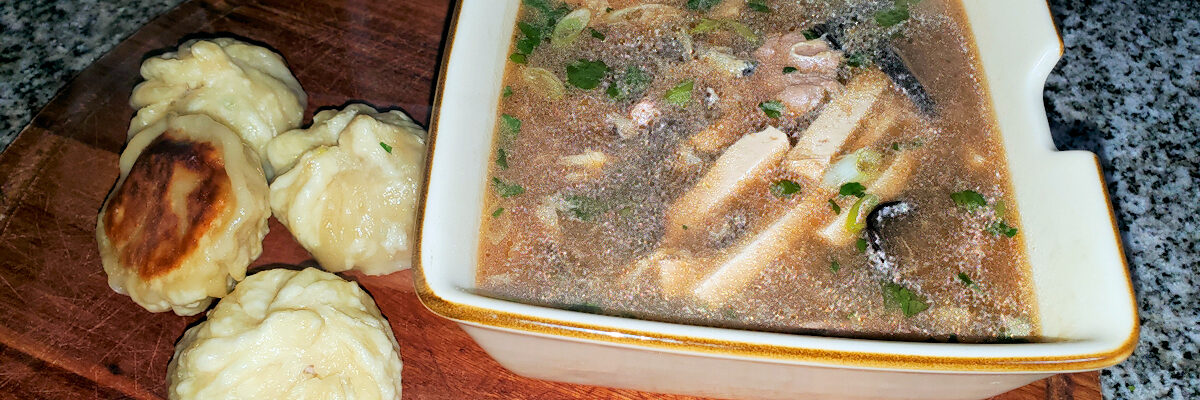
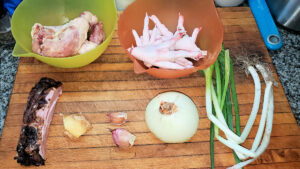
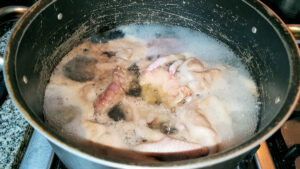
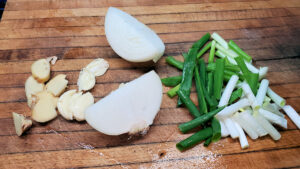
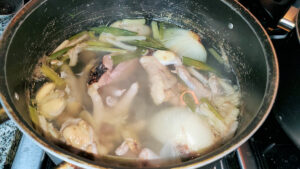
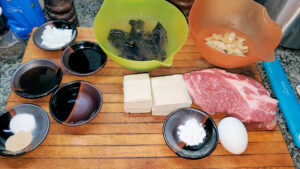
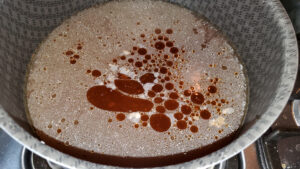
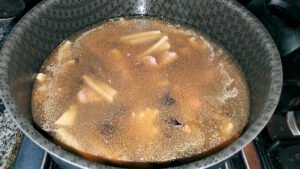
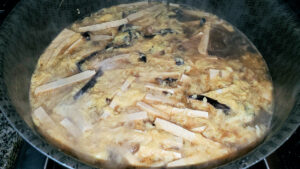
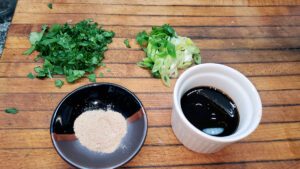
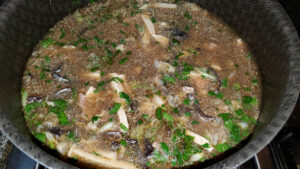
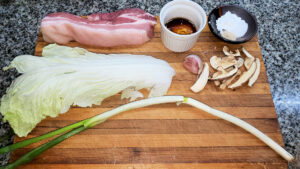
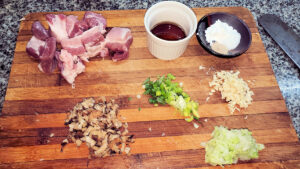
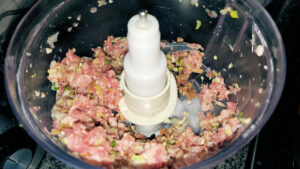
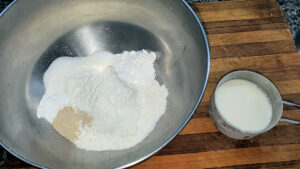
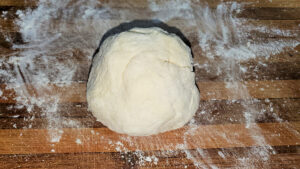
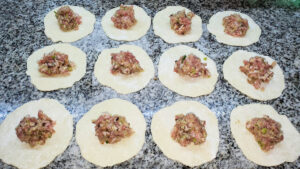
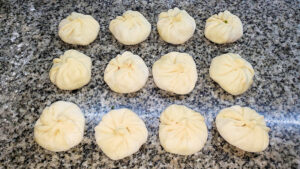
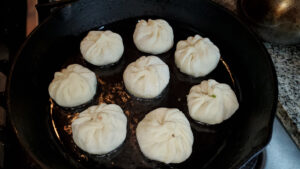
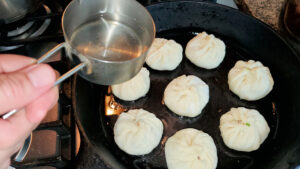
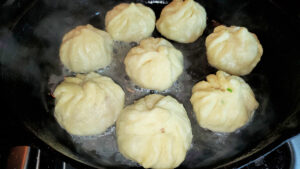

Ok. I’m going to have to find Mexico City’s barrio Chino when I arrive. Food looks great. Salud!
I can’t tell you much about the Chinese food scene in Mexico City, in fact, nothing at all, but I refer you to my friend Nicolas Gilman’s guides to dining in Mexico City, the most recent one being this one.
[…] stop… China. Oh boy, the first really big, hugely varied country to hit. How I’m going to even begin to […]